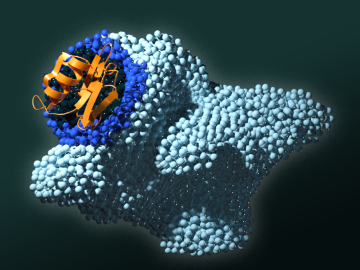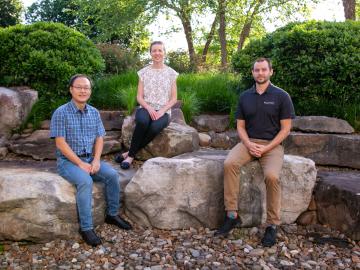
Filter News
Area of Research
- (-) Biology and Environment (52)
- Advanced Manufacturing (2)
- Biology and Soft Matter (1)
- Building Technologies (2)
- Clean Energy (49)
- Computational Biology (1)
- Computer Science (1)
- Electricity and Smart Grid (1)
- Functional Materials for Energy (2)
- Fusion and Fission (15)
- Isotopes (3)
- Materials (43)
- Materials for Computing (6)
- National Security (25)
- Neutron Science (14)
- Renewable Energy (1)
- Supercomputing (39)
News Topics
- 3-D Printing/Advanced Manufacturing (3)
- Advanced Reactors (1)
- Artificial Intelligence (3)
- Big Data (1)
- Bioenergy (15)
- Biology (26)
- Biomedical (2)
- Biotechnology (3)
- Buildings (1)
- Chemical Sciences (6)
- Clean Water (2)
- Climate Change (16)
- Composites (2)
- Computer Science (3)
- Coronavirus (2)
- Critical Materials (1)
- Cybersecurity (1)
- Decarbonization (8)
- Energy Storage (4)
- Environment (24)
- Exascale Computing (1)
- Frontier (1)
- Grid (2)
- High-Performance Computing (4)
- Hydropower (5)
- Machine Learning (3)
- Materials (4)
- Materials Science (2)
- Mercury (1)
- Microscopy (6)
- Nanotechnology (2)
- National Security (1)
- Net Zero (1)
- Neutron Science (1)
- Nuclear Energy (1)
- Partnerships (3)
- Polymers (1)
- Security (1)
- Simulation (1)
- Summit (2)
- Sustainable Energy (9)
- Transformational Challenge Reactor (1)
- Transportation (1)
Media Contacts

Five technologies invented by scientists at the Department of Energy’s Oak Ridge National Laboratory have been selected for targeted investment through ORNL’s Technology Innovation Program.

Scientists at ORNL have created a miniaturized environment to study the ecosystem around poplar tree roots for insights into plant health and soil carbon sequestration.

A team of scientists led by Oak Ridge National Laboratory developed a theory that thylakoids, membrane networks key to plant photosynthesis, also function as a defense mechanism to harsh growing conditions, which could aid the development of hardier plants.

Chemical and environmental engineer Samarthya Bhagia is focused on achieving carbon neutrality and a circular economy by designing new plant-based materials for a range of applications from energy storage devices and sensors to environmentally friendly bioplastics.
Scientists at Oak Ridge National Laboratory are closer to unlocking the secrets to better soil carbon sequestration by studying the tiny, sand-like silicon deposits called phytoliths in plants.

Science has taken Melanie Mayes from Tennessee to the tropics, studying some of the most important ecosystems in the world.

Researchers at ORNL have definitively linked the function of a specific domain of proteins important in plant-microbe biology to a cancer trigger in humans, knowledge that had eluded scientists for decades.

As the United States moves toward more sustainable and renewable sources of energy, hydropower is expected to play a pivotal role in integrating more intermittent renewables like wind and solar to the electricity grid

Microorganisms may provide hope that peatlands can withstand hotter temperatures in a changing climate.

The Department of Energy’s Office of Science has selected three Oak Ridge National Laboratory scientists for Early Career Research Program awards.


